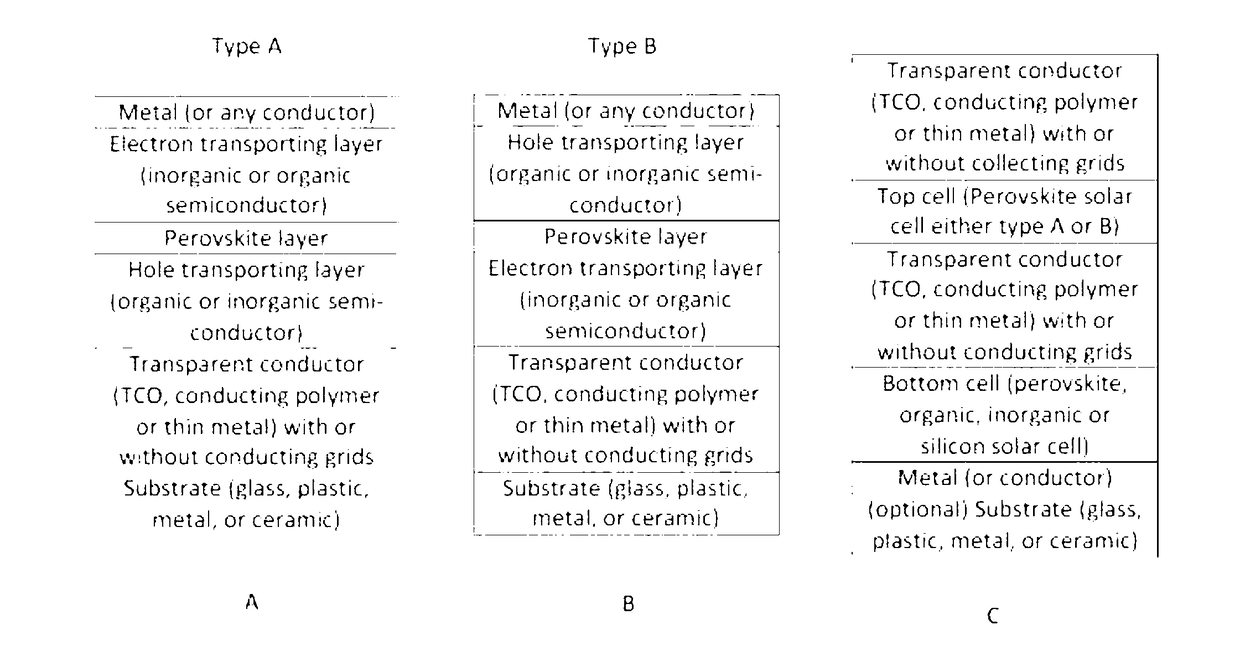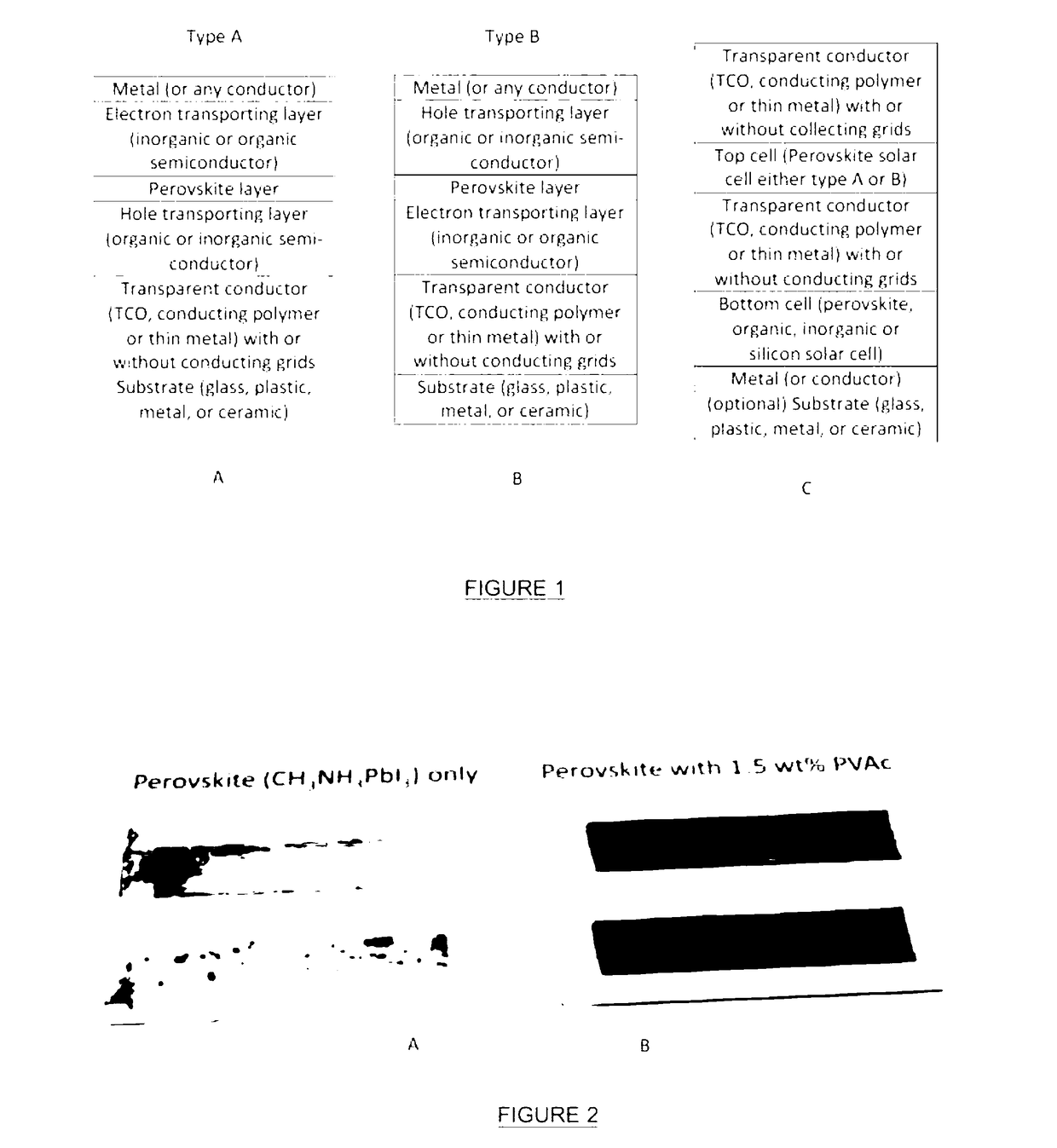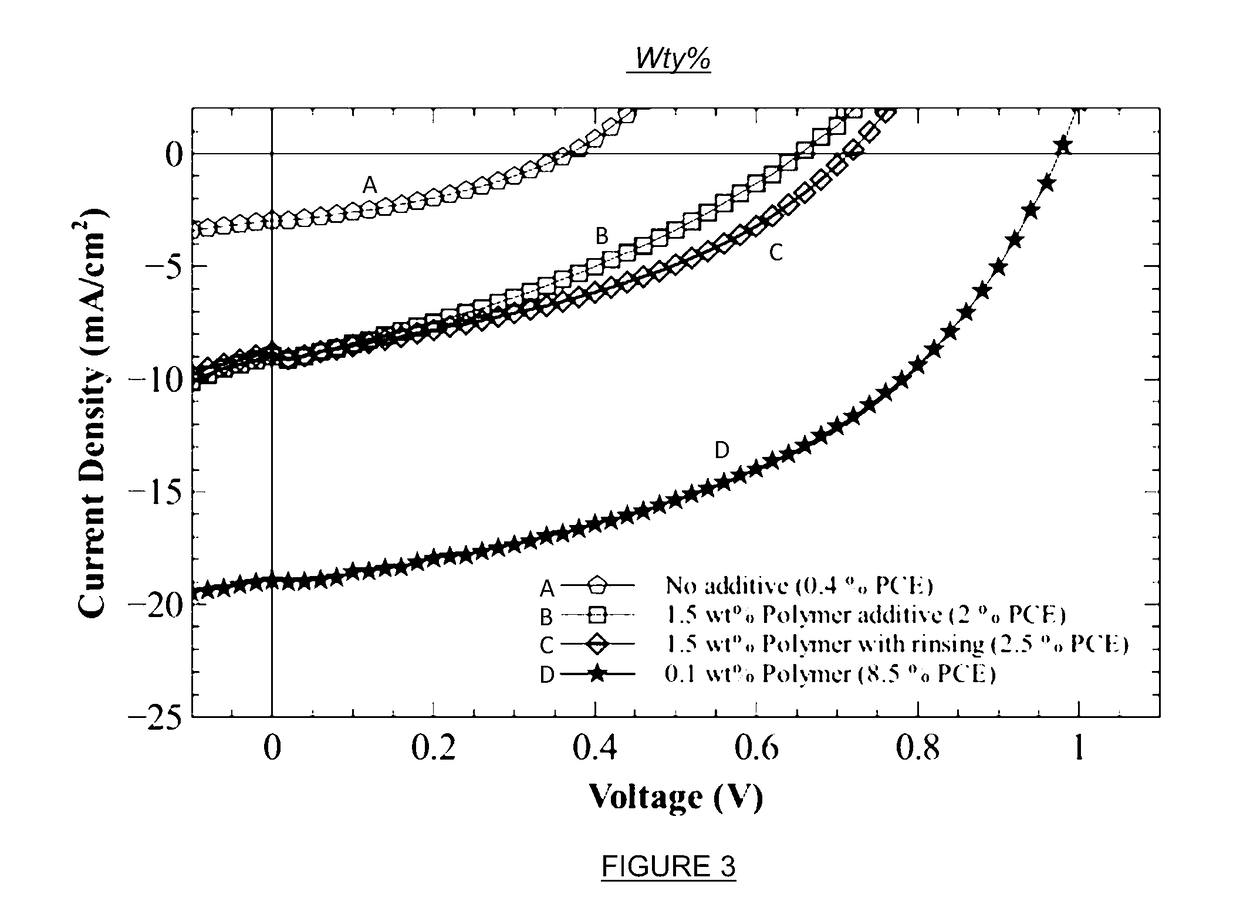Process of forming a photoactive layer of a perovskite photoactive device
a photoactive device and photoactive layer technology, applied in the direction of light-sensitive devices, solid-state devices, electrolytic capacitors, etc., can solve the problem of difficult fabrication of continuous film layers comprising uniform crystal structures, and achieve the effect of improving the cell's sunlight to electrical energy conversion efficiency, broader spectral response and high efficiency
- Summary
- Abstract
- Description
- Claims
- Application Information
AI Technical Summary
Benefits of technology
Problems solved by technology
Method used
Image
Examples
example 1
PVAc Polymer Additive
(1) Material Preparation.
Preparation of ZnO Precursor:
[0123]A ZnO precursor was prepared by dissolving zinc acetate dihydrate (Zn(CH3COO)2·2H2O, Aldrich, 99.9%, 1 g) and ethanolamine (NH2CH2CH2OH, Aldrich, 99.5%, 0.28 g) in 2-methoxyethanol (CH3OCH2CH2OH, Aldrich, 99.8%, 10 mL) under vigorous stirring for 12 h.
Preparation of ZnO Nanoparticle:
[0124]ZnO nanoparticles were synthesized from zinc acetate dehydrate and sodium hydroxide (NaOH). The zinc acetate solution was prepared by dissolving zinc acetate dihydrate (0.230 g) in ethanol (15 mL) at 75° C. and the NaOH solution was prepared by dissolving NaOH (0.1 g) in ethanol (5 mL). The NaOH solution was added dropwise to the zinc acetate solution at RT under vigorous stirring. Subsequently, the transparent suspension showed green emission under excitation by an UV lamp. The transparent suspension of nanoparticles was purified by repeated precipitation with heptane, centrifuging and redispersion in EtOH. The washed...
PUM
| Property | Measurement | Unit |
|---|---|---|
| thickness | aaaaa | aaaaa |
| thickness | aaaaa | aaaaa |
| thickness | aaaaa | aaaaa |
Abstract
Description
Claims
Application Information
 Login to View More
Login to View More - R&D
- Intellectual Property
- Life Sciences
- Materials
- Tech Scout
- Unparalleled Data Quality
- Higher Quality Content
- 60% Fewer Hallucinations
Browse by: Latest US Patents, China's latest patents, Technical Efficacy Thesaurus, Application Domain, Technology Topic, Popular Technical Reports.
© 2025 PatSnap. All rights reserved.Legal|Privacy policy|Modern Slavery Act Transparency Statement|Sitemap|About US| Contact US: help@patsnap.com



